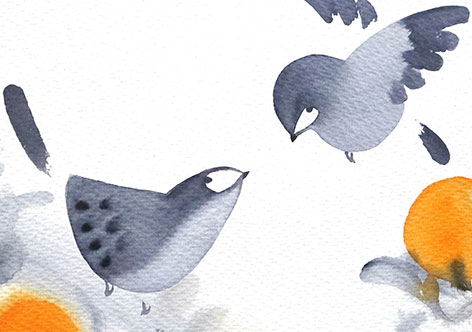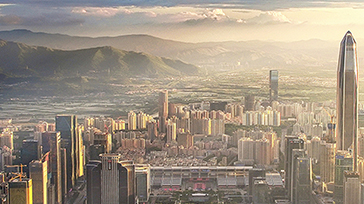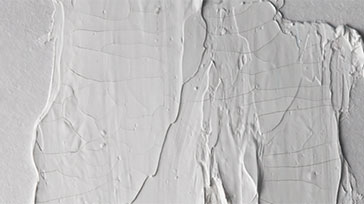Key Highlights
- The proliferation of Asian art is an indication of the region’s growing status
- The emergence of Asian art can be accredited to the region’s growing economic and political presence on the global stage
- Beyond the realm of Art, Asia is also leading the charge in the digital edge
Measuring two metres tall and 4.86 meters wide, Zao Wou-ki’s ‘Triptyque 1987-1988’ is at once both imposing as it is surreal.
Intended as a personal homage to his idol, French artist Henri Matisse, Zao draws viewers into an abstract space accentuated by ample light and pastel hues.
But what stands out most about the painting is Zao’s ability to skilfully meld together both Eastern and Western art traditions — a synthesis of his Chinese painting expertise as well as Western inclination for light and colour.
Spread across three canvasses, his Chinese ink-brush techniques evoke a visual storm of blue, purple and yellow strokes while his Impressionist-inspired open composition style help to calm the senses.
After his death in 2013, Zao achieved a feat he would never have thought possible while alive — beating his idol in annual auction sales.
In 2018, the annual auction turnover of Zao’s works doubled to US$327 million making him the world’s third best-selling artist after Picasso (US$744 million) and Monet (US$357 million).
Matisse came in at ninth place with US$154 million.
Zuo’s emergence as a master artist is a prodigious sign that Asian art is finally being recognised on the same level as its Western counterparts — a clear indication of the region’s growing status as the new global arts epicentre.
Evolution of Asian Art
While some may attribute the global rise of art to the Western world, one cannot deny the pivotal role that Asian art has played in helping to inspire and lay the foundations for generations of artists.
The history of Asian art, which dates back to as far as 3790 BCE, can be traced to a vast range of influences across early civilizations found in places like modern-day India, Indonesia and China.
Dutch post-impressionist painter Vincent Van Gogh for one, employed techniques from Japanese prints and incorporated them into his artwork.
Apart from traditional galleries, Asian art has also found its way into contemporary forms.
One such Asian artist who has amassed a global following is 90-year old Yayoi Kusama.
Commonly referred to as the 'princess of polka dots,' her psychedelic and dotted dreamscapes drew almost five million people worldwide to her exhibitions between 2014 and 2019.
Anime, another form of Japanese art, also enjoys wide mainstream appeal.
Japanese animation company Studio Ghibli, for instance, has garnered worldwide acclaim with its movie, ‘Spirited Away’.
It won the Oscar for best animated film in 2003, making it the first Japanese film to receive the accolade. The movie also ranked second on the New York Times’s Best Movies of the Century So Far list in 2017.
Rise of Asia
In many ways, the emergence of Asian art can be accredited to the region’s growing economic and political presence in the world.
In fact, the Chinese art market is the third largest in the world after the United States and the United Kingdom, making up almost 19 percent of global art sales. Data from the Global Chinese Art Auction Market Report also reveals that overseas sales of Chinese art has blossomed by more than four-fold since 2009.
In a 2018 feature in the South China Morning Post, Christopher Moore, the publisher of Ran Dian, a global online art magazine specialising in Chinese contemporary art, underlined the impact that the country has had on the global scene.
“Compared with a decade ago, Asian content has only marginally increased in European institutions but it is now more noticeable, partly because everyone is much more aware of China’s rising political and economic influence,” he said.
Investing in Asia
Zao’s ‘Triptyque 1987-1988’ might have been painted in the late 80’s but its underlying appeal still hold true today.
Not only has Asian art proven that it can live in co-existence with its Western counterparts, it is increasingly becoming influential.
This is Asia’s century, a period in which a thousand flowers will bloom, from the region’s cultural influences to its economic impact on the world.
This publication shall not be copied or disseminated, or relied upon by any person for whatever purpose. The information herein is given on a general basis without obligation and is strictly for information only. This publication is not an offer, solicitation, recommendation or advice to buy or sell any investment product, including any collective investment schemes or shares of companies mentioned within. Although every reasonable care has been taken to ensure the accuracy and objectivity of the information contained in this publication, UOB Asset Management Ltd ("UOBAM") and its employees shall not be held liable for any error, inaccuracy and/or omission, howsoever caused, or for any decision or action taken based on views expressed or information in this publication. The information contained in this publication, including any data, projections and underlying assumptions are based upon certain assumptions, management forecasts and analysis of information available and reflects prevailing conditions and our views as of the date of this publication, all of which are subject to change at any time without notice. Please note that the graphs, charts, formulae or other devices set out or referred to in this document cannot, in and of itself, be used to determine and will not assist any person in deciding which investment product to buy or sell, or when to buy or sell an investment product. UOBAM does not warrant the accuracy, adequacy, timeliness or completeness of the information herein for any particular purpose, and expressly disclaims liability for any error, inaccuracy or omission. Any opinion, projection and other forward-looking statement regarding future events or performance of, including but not limited to, countries, markets or companies is not necessarily indicative of, and may differ from actual events or results. Nothing in this publication constitutes accounting, legal, regulatory, tax or other advice. The information herein has no regard to the specific objectives, financial situation and particular needs of any specific person. You may wish to seek advice from a professional or an independent financial adviser about the issues discussed herein or before investing in any investment or insurance product. Should you choose not to seek such advice, you should consider carefully whether the investment or insurance product in question is suitable for you.
UOB Asset Management Ltd Co. Reg. No. 198600120Z





